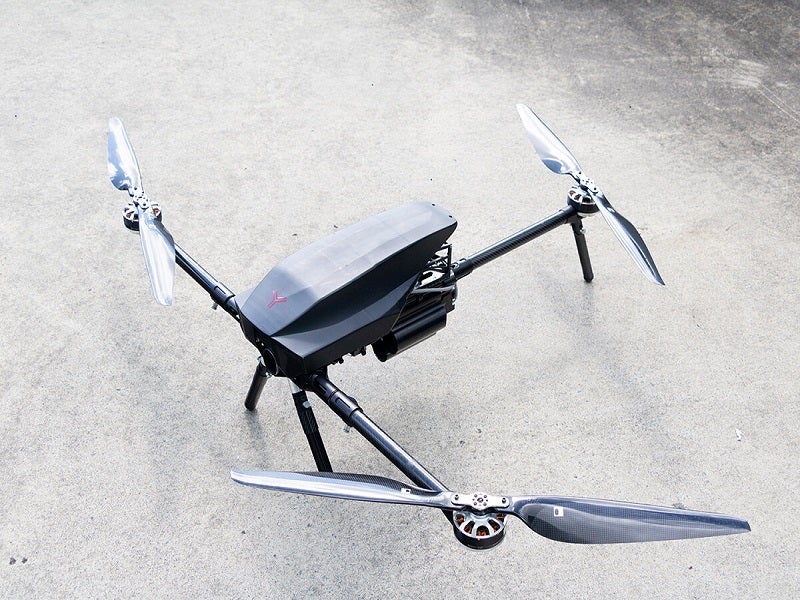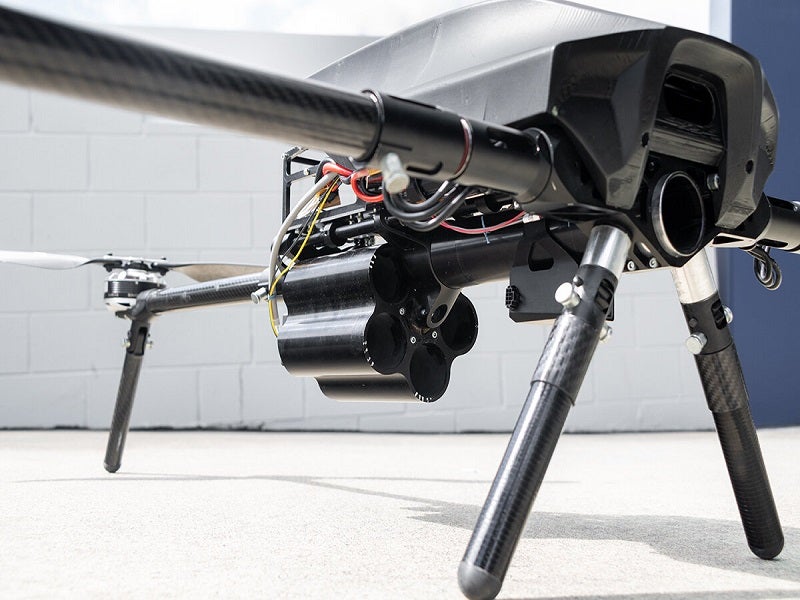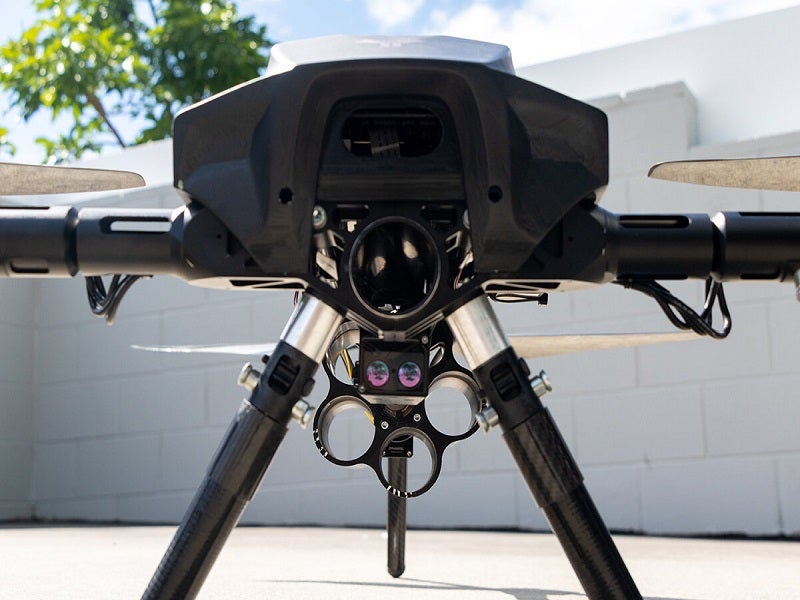Cerberus GLH is an advanced unmanned aerial system (UAS) manufactured by Australian robotic defence products developer Skyborne Technologies for tactical aerial fire support missions. It is claimed to be the first-of-its-kind man-packable multiple-shot drone.
The next-generation weaponised unmanned aerial vehicle (UAV) will provide increased firepower for platoon-sized units. It will allow dismounted soldiers to engage counter-defilade and light armour targets from a standoff distance.
The platform is designed to operate in complex urban environments and can be used for precision strike capability with low collateral damage. It can be deployed against a range of targets, including light armoured vehicles and personnel.
Cerberus GLH development
Skyborne formally unveiled the Cerberus prototype in March 2018 following the completion of the first fire test in February 2018. It was supported by Australian arms and ammunition supplier NIOA in the development of the UAV.
The company completed a $2.45m Series A capital funding to advance the development of the target and firing weapon system for the Cerberus GL UAV in April 2019. The capital fundraising came after the company secured grants from the Queensland state government under the Ignite Ideas Fund to design and assemble two flying prototypes of the Cerberus GL. The Ignite Ideas Fund supports small and medium businesses to commercialise innovative products and services.
In August 2019, Skyborne Technologies received a Sovereign Industrial Capability Priority (SICP) grant worth $313,667 from the Australian Government to develop advanced weaponry for the Cerberus GL.
The UAV was demonstrated to the US Army in December 2019 in the Army Expeditionary Warrior Experiment (AEWE) 2020 in December 2019. AEWE is a US Army initiative to evaluate cross-domain manoeuvre concepts in support of multi-domain operations. The UAV live-fired five 40mm grenade rounds, including two aerial flashbang, two chalk marker rounds, and a smoke marker round during the trial.
Design and features of Cerberus GLH
The Cerberus UAV has a tri-tilt rotor airframe that helps in maintaining the centre of gravity of the UAV at the location of the mounted launcher to ensure greater stability while firing and reduced recoil shock. The UAV body is made of carbon fibre and aluminium.
The lightweight and small drone measures 1.3m from nose to rear propeller tip and 1.85m from outer propeller tip to tip. It has a take-off weight of 10kg. The UAV is man-packable and can be deployed from a backpack within a few minutes of assembling. The total setup and launch time is less than two minutes.
The rotors are mounted on arms that are detachable from the main body, while the landing gear at the bottom of the UAV’s body is foldable. The entire frame can tilt up and down for proper aiming and pointing of the launcher towards the target. The tilt mode eliminates the need for a separate large gimbal that is seen in most conventional UAVs.
Cerberus has two main front rotors and a rear control fan. The front two rotors provide forward thrust and efficient control similar to V22 Osprey aircraft when the UAV is flying at a higher speed.
The vertical take-off and landing (VTOL) UAV leaves a low acoustic signature trail. The communication link is encrypted with C2 encryption.
The armament flexibility offered by the armed drone includes 40mm rounds, compact machine guns (FN P90), 12GA shotgun, net-guns, and smart micro-munitions.
The system also enables a soldier to conduct battle damage assessment for critical beyond-line-of-sight (BLOS) targets post the firing mission while operating from a safe stand-off distance. The training for manoeuvring and control can be achieved through simulation.
Skyborne HAVOC launcher
The Cerberus GLH is integrated with the Skyborne HAVOC launcher, a 40mm electrically-fired launcher that can be loaded with up to five rounds. The chamber and barrel of the launcher are made of aluminium.
The launcher is a bespoke weapons system manufactured in-house by Skyborne Technologies, specifically for weaponised unmanned vehicles (UxV).
It features five revolver-styled rounds for loading ammunition. The NATO 40mm rounds can be selected and fired at will. It houses a solenoid-operated firing pin and servo-operated round chamber for rounds selection during operation. The launcher has a rate of fire of 120 rounds a minute.
The lightweight grenade launcher weighs about 2.5kg and has a length of 460mm, width of 225mm, and height of 130mm.
The loading chamber can be loaded with 40mm of lethal as well as non-lethal ammunition such as flash, tear gas, and smoke bombs.
Payload
The Cerberus can carry two types of payloads – recoiled weapon payloads and recoilless UAV payloads.
The recoil weapons are properly fitted with the platform so that they are located at the centre of gravity of the UAV to provide optimal recoil recovery.
The Cerberus platform is designed to enable the deep integration of the onboard weapon system, similar to the A-10 Warthog attack aircraft.
The recoilless weapon payloads that can be carried by the drone include rocket-propelled armaments, chemical, biological, radiological, nuclear, and high yield explosives (CBRNE) sensors, short wave infrared (SWIR) detectors, electronic warfare (EW) equipment, and laser designators.
A fixed electro-optic (EO)/low light and infrared (IR) camera is fitted for EO/IR optics, while a laser ranger finder is also equipped on the UAV for accurate targeting. The UAV can also be loaded with long-range detection payloads such as directional antennas for EW operations and communications.
Flight control system of Cerberus GLH UAV
The Cerberus UAV employs Athena AI vision-based artificial intelligence (AI) system for flight control.
The graphics processing unit- (GPU) based flight computer has a proprietary flight control software for onboard AI edge processing. The Athena AI is a military AI decision support tool that provides reduced cycle times for the sensor to effector cycle. It combines AI computer vision, decision support, and information display in a user interface.
Propulsion and performance
The Cerberus GLH is driven by an electric propulsion system. It features a smart battery redundancy system. The UAS has a line-of-sight range of up to 5km and can attain a speed of 60km/h to 70km/h. It provides an effective firing range of up to 180m and an endurance of up to 30 minutes.






